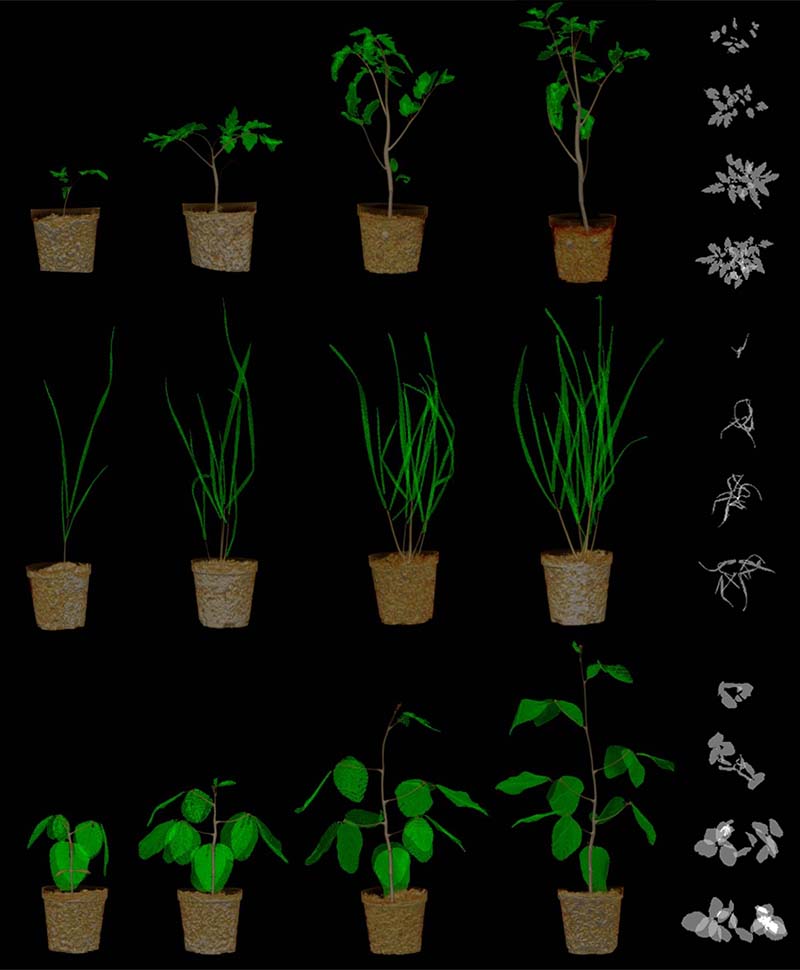Press Release
Johns Hopkins APL Researchers Plant Ideas for Building Better Biological Sensors
The Johns Hopkins Applied Physics Laboratory (APL), in Laurel, Maryland, is involved in a number of research efforts to better understand the use of plants as sensors that can identify chemical and biological threats in the environment. But one of the challenges of such research is to better understand the possibilities without damaging the plants, and healthy plants can yield better information.
Scientists in APL’s Research and Exploratory Development Department (REDD) have created a way to scan plants without destroying them — using computed tomography (CT) to collect data on how they grow — and they’ve developed an algorithm to extract important plant-response metrics. They describe their work in “Nondestructive automated workflow for analyzing diverse leaf morphologies using computed tomography,” published July 30 in the Plant Phenome Journal.
“Leaf area (and projected leaf area) is an important metric for analysis of plant response to environment, but it is difficult to quantify this leaf area without disturbing the plant,” explained Nathanael Kuo, the paper’s lead author and a biomedical engineer in REDD. “Oftentimes, in order to collect this information, the plant would have to be sacrificed to take the necessary measurements. Our method enables us to get leaf area with little disturbance to plant growth, which is an important innovation for the field.”
APL has unique capabilities that allowed Kuo and his team to conduct this research, namely a medical-grade CT scanner. APL also has significant expertise in analysis of CT data for trauma-related injuries focused on human tissue, such as the Laboratory’s work on the Warrior Injury Assessment Manikin (WIAMan) project. The goal of WIAMan is to develop a test device that accurately simulates, measures and predicts the biomechanical response of a human exposed to underbody blasts, so better protective equipment and vehicles can be designed.
“This work represents a novel application of our expertise in CT imaging and evaluation to new biological systems,” noted paper co-author Collin Timm, also of REDD. “It also sets the foundation for new applications of APL expertise in biological sciences.”
The Lab has several ongoing projects on plant imaging and CT scanning, and the group expects to publish more studies on their work soon.
“A holy grail in plant characterization is the ability to quantify below-ground phenotypes — specifically how roots grow under plant stress — so we are directing our focus toward this critical challenge,” Timm said. “Plants are living organisms and, just like any other life form, respond to their environment. Because they can’t flee, plants have evolved unique responses that manifest as changes to their biochemical makeup.
“Using APL’s expertise in remote detection.” he continued, “we think we can develop signatures that explain what the plant is experiencing in their environment.”
